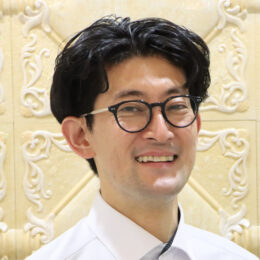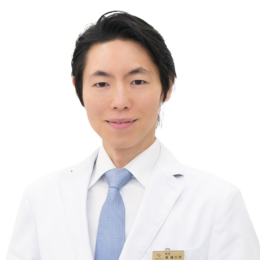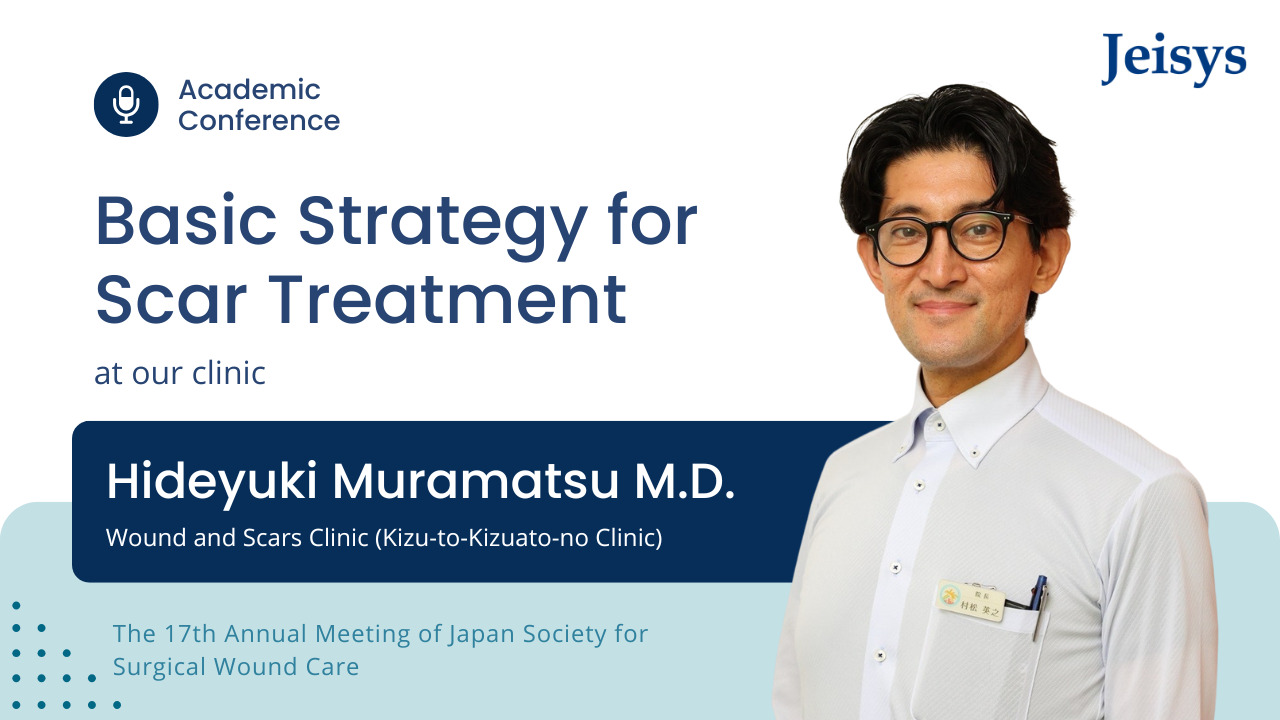
From my experience specializing in scar treatment, I realized that the key to higher patient satisfaction lies not only in skill but also in proper expectation management and an accurate diagnostic process. Scars do not “disappear”; they can be “improved.” By sharing this premise with patients and selecting the appropriate treatment each time, we enhance their quality of life. This lecture will cover basic strategies, treating keloids and hypertrophic scars, addressing scars from self-harm or cosmetic surgery, and future perspectives.
- INDEX
- The Low Awareness of Plastic Surgery in Japan and Our Clinic's Mission (00:10-)
- Basic Strategy: Three-Step Process of Expectation Adjustment → Diagnosis → Treatment Decision (05:50–)
- Keloid and Hypertrophic Scars: Four Key Treatment Strategies and Practical Tips That Greatly Influence Treatment Outcomes (08:02-)
- Scarring from Self-Harm and Post-Cosmetic Surgery Scarring: Addressing Social Issues in Clinical Practice (26:30–)
- Outlook: The Importance of Non-Insured Medical Care and Expanding the Scar Treatment Team (40:00-)
The Low Awareness of Plastic Surgery in Japan and Our Clinic’s Mission (00:10-)
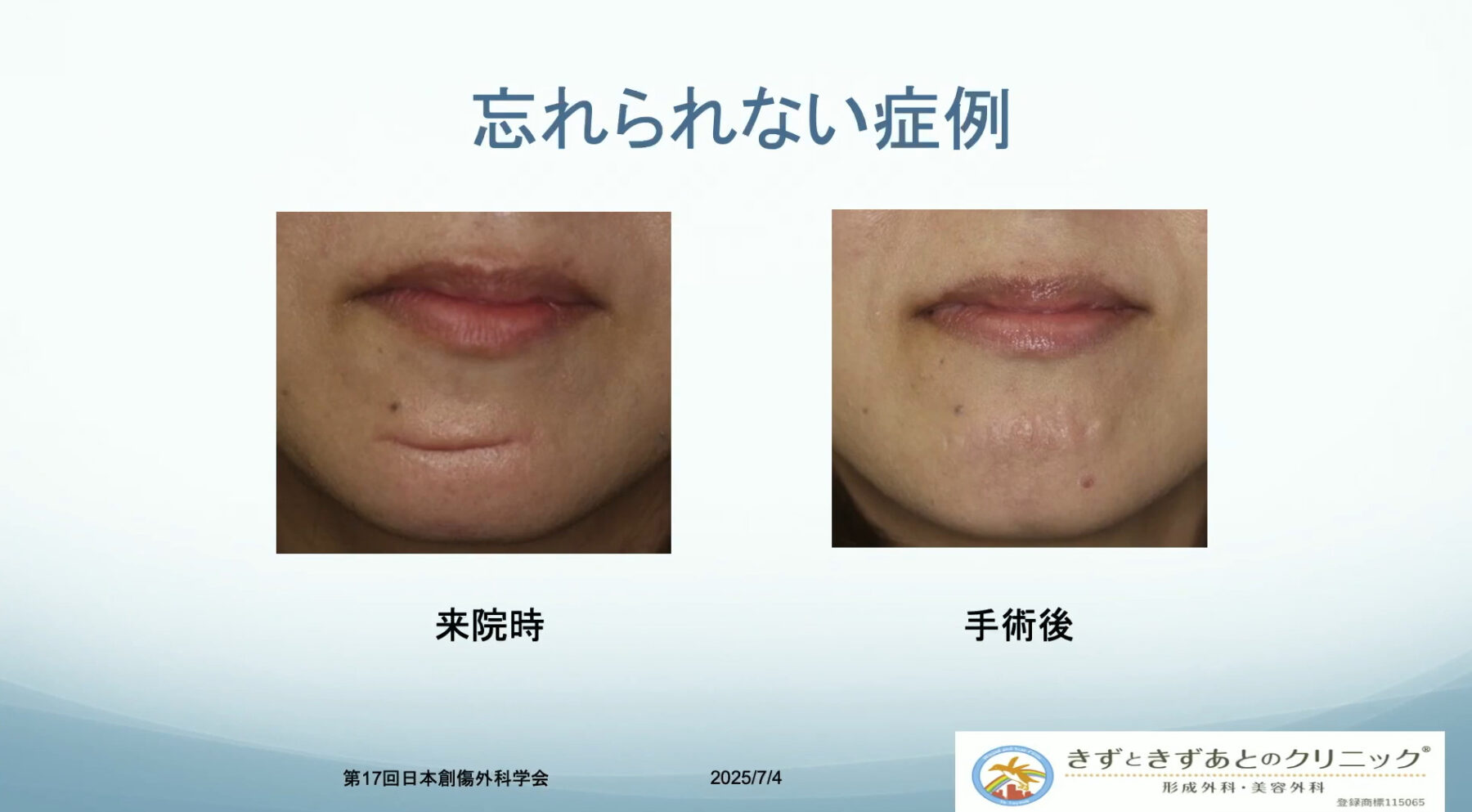
A letter from a young patient who underwent W-plasty for a jaw scar, stating “Now I can walk forward,” showed how a lack of recognition for plastic surgery leads to delayed treatment. While plastic surgery is respected overseas, it remains poorly understood in Japan. Consequently, in 2017, we established a specialized scar treatment clinic. Serving as a medical gateway ensuring patients never lose their way, it contributes to raising societal awareness.
Basic Strategy: Three-Step Process of Expectation Adjustment → Diagnosis → Treatment Decision (05:50–)
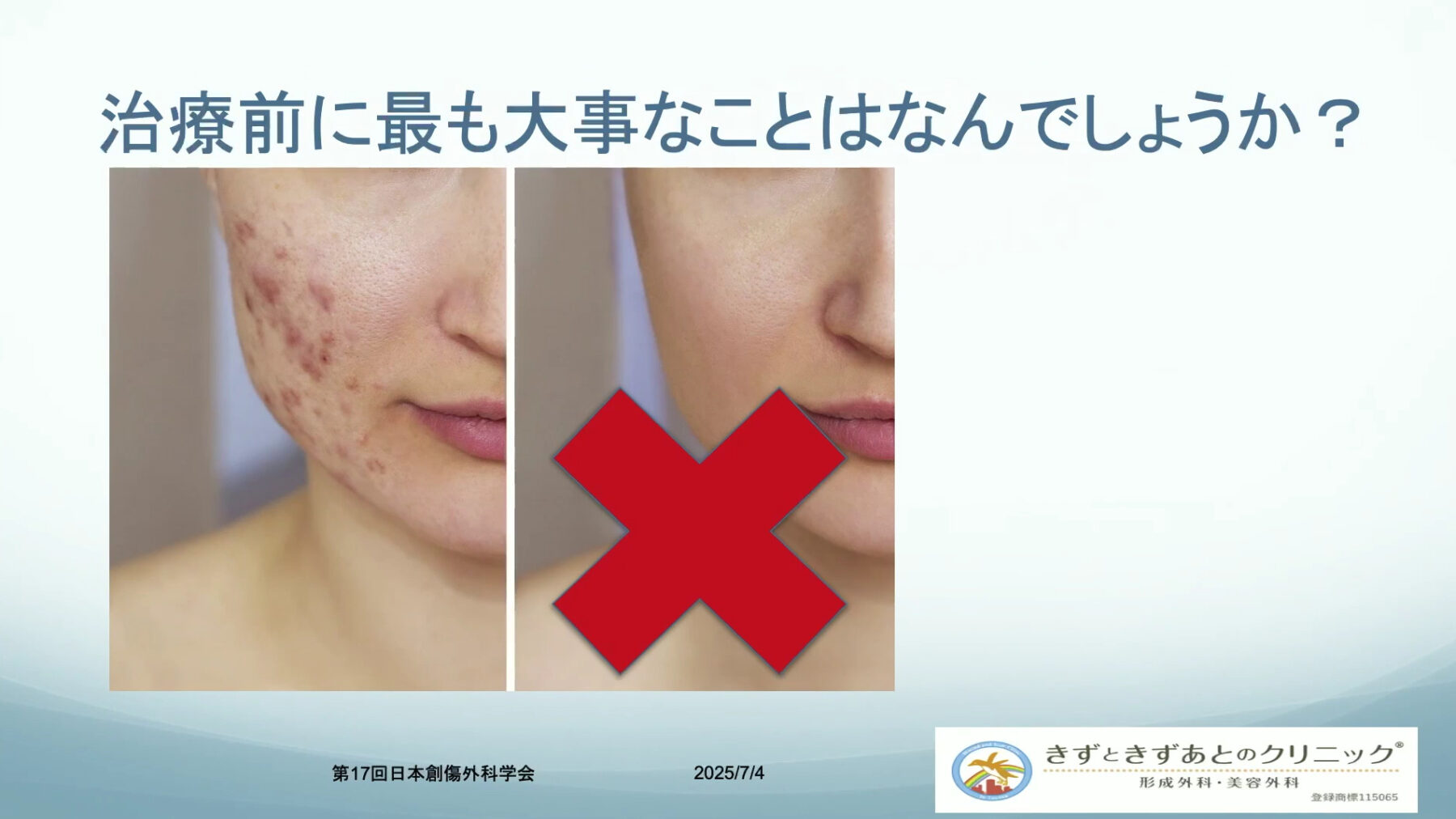
The first key is adjusting patient expectations. (1) Scars will not disappear, (2) Improvement takes years, (3) External factors can worsen the scar—we openly share this “unpleasant truth” with patients to establish a foundation for satisfaction.
Next is diagnosis. Scars are classified into 4 types; ① Immature , ② Mature , ③ Keloid/Hypertrophic , and ④ Contracture. Primary treatments include conservative therapy for immature scars, device-based treatments or surgery for mature scars, and oral/topical medications as adjunctive care for pigmentation. For keloids/hypertrophic scars, an appropriate therapy combination is selected from oral medications, topical medications, patch therapy, compression therapy, injection therapy, laser therapy, surgical intervention, and radiation therapy. Based on them, an optimal treatment plan is formulated.
Keloid and Hypertrophic Scars: Four Key Treatment Strategies and Practical Tips That Greatly Influence Treatment Outcomes (08:02-)
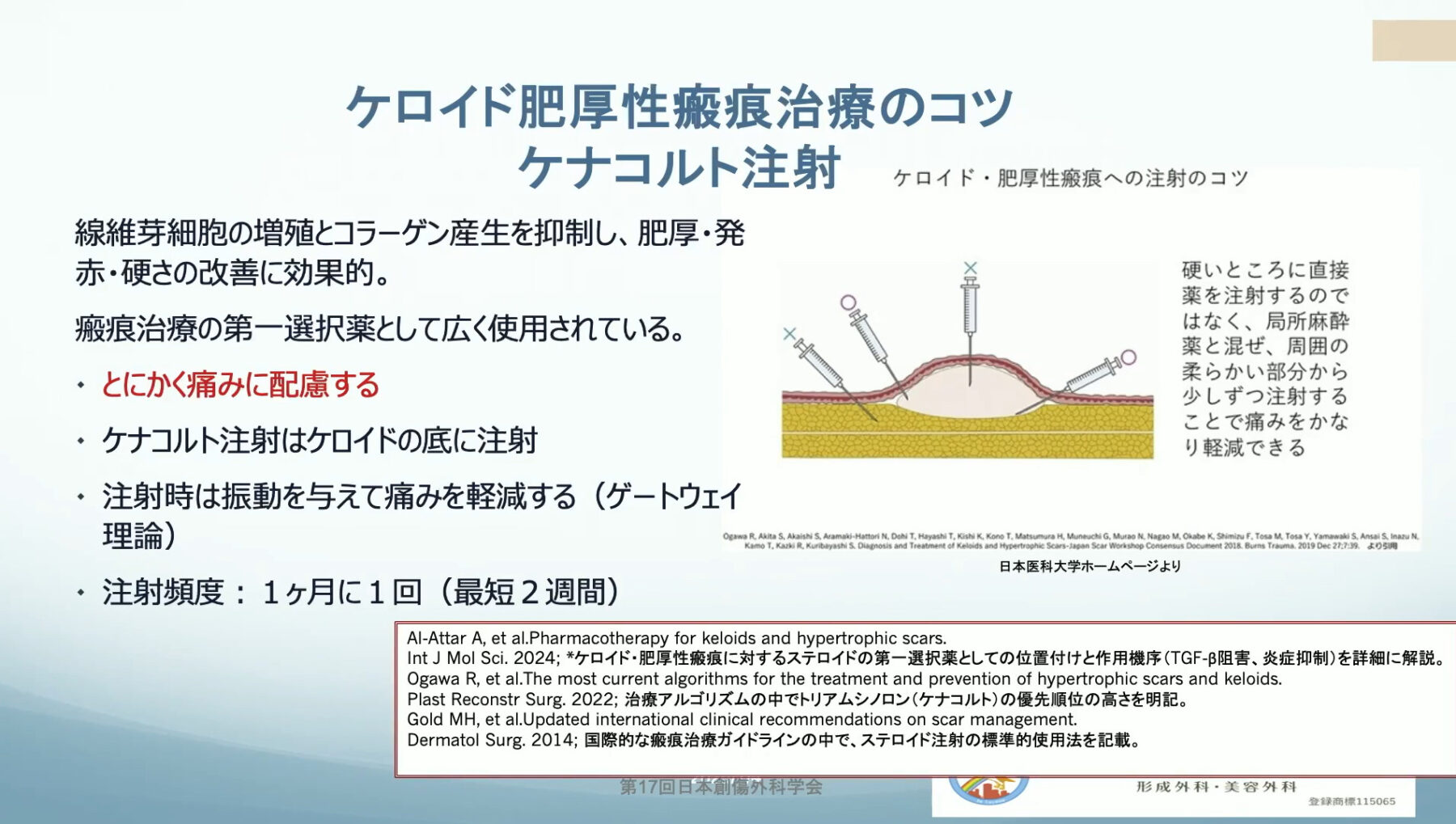
Eclar plasters can be applied early after suture removal. Patients must be thoroughly instructed to “apply the plaster when the affected area is hard and not apply it once it has flattened.” Continuous use for 1 to 2 years is anticipated. After explaining the risk of depigmentation, instruct patients to follow the optimal application site.
The tip to injecting is to administer the medication from the area surrounding the lesion toward deeper layers. Apply vibration to reduce pain and ensure complete delivery of the full dose.
Botox is expected not only to relax tension at the wound site but also to suppress fibroblast proliferation, and its combination with Kenacort or laser therapy expands treatment options.
POTENZA combines micro-perforation, high-frequency thermal energy, and drug delivery technology. Its negative-pressure mechanism and adjustable depth and thermal intensity effectively improve scar redness and hardness. It offers high drug flexibility and is compatible with future new drug formulations.
Even for postoperative scars following cosmetic procedures such as philtrum reduction and oral commissure lift, POTENZA has the potential to improve persistent erythema and induration that were unresponsive to other laser modalities.
Scarring from Self-Harm and Post-Cosmetic Surgery Scarring: Addressing Social Issues in Clinical Practice (26:30–)
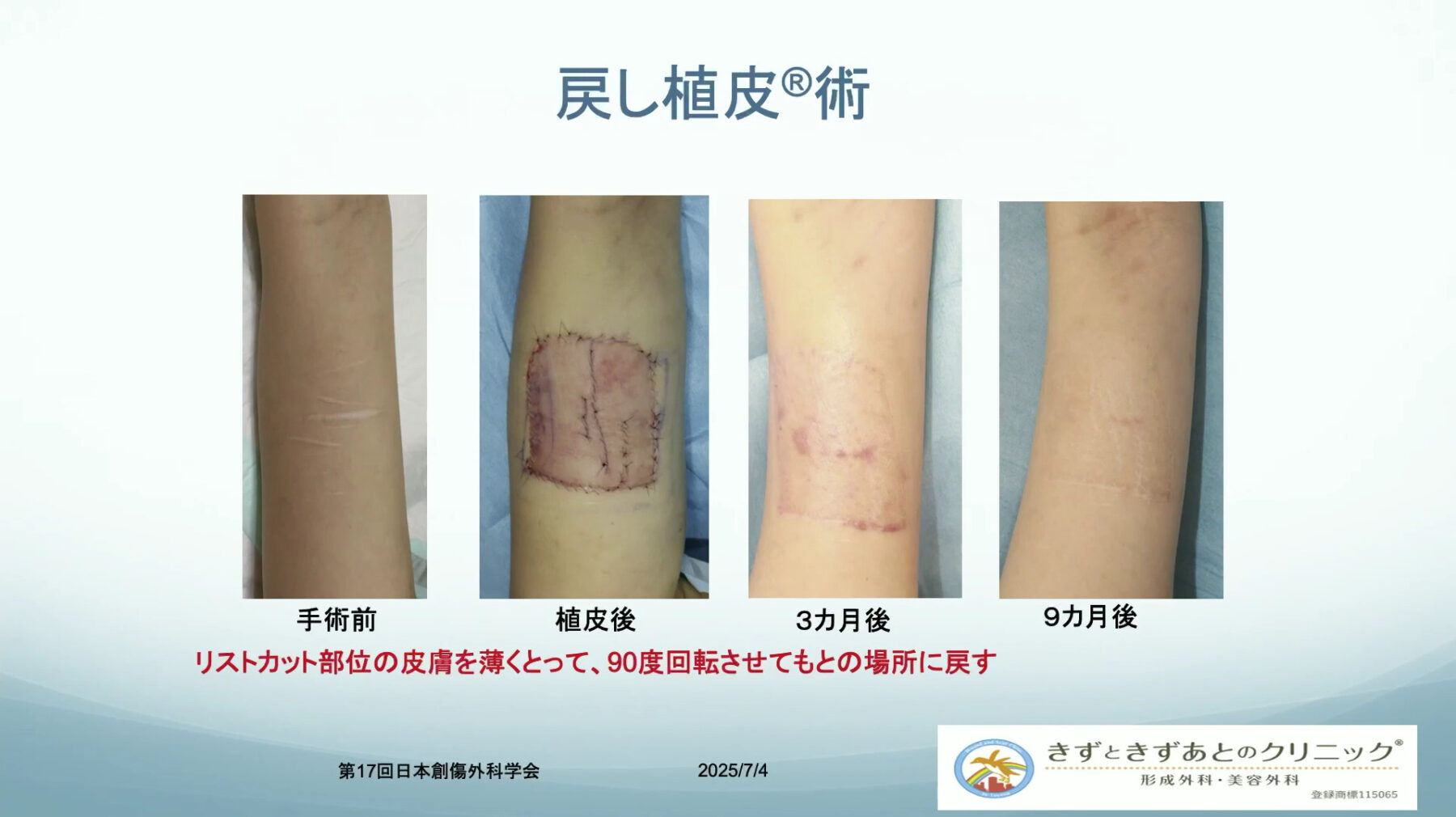
Patients with self-harm scars often face prejudice and difficulties, but we aim to improve appearance and texture of scars through techniques like rotational flap (taking a thin skin graft, rotating it 90 degrees, and repositioning it), fractional laser therapy, autologous cultured epidermis, and hybrid grafts combining scar tissue with healthy skin. We also support individuals and their families through association establishment and outreach via books and media.
Consultations on scarring from cosmetic surgery are increasing, such as mole removal, procedures around the nose, hypertrophic scars after liposuction, and changes in burn marks after laser hair removal. Reasons for growth include: (1) the spread of aesthetics medicine, (2) increased patient knowledge, (3) the rise in procedures with a high risk of scar formation, and (4) a lack of knowledge about scar treatment. Our clinic focuses solely on correcting the scar itself, without blaming the previous practitioner.
Outlook: The Importance of Non-Insured Medical Care and Expanding the Scar Treatment Team (40:00-)
Amid mainstream healthcare cost-cutting policies, scar treatment to improve QOL has limited insurance coverage. Clinicians should actively introduce non-insured medical devices and medications to enhance treatment quality and bridge the gap with international levels. I aim to form a team that continuously learns while striving to improve treatment outcomes and maintain patient satisfaction.
